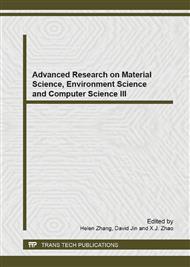p.580
p.584
p.589
p.593
p.598
p.605
p.609
p.613
p.617
Evaluation of Ground Thermal Infrared Camouflage Based on Dynamic DEA Model
Abstract:
Thermal infrared camouflage refers to a series of camouflage patterns for coping with modern thermal infrared reconnaissance. In order to solve the problems that the subjectivity of traditional evaluation methods on ground thermal infrared camouflage and correlation constraint is not easy to test and so on. The effect factors of thermal infrared camouflage were analyzed, the index system of model of ground thermal infrared camouflage was established, and based on it, the dynamic DEA (data envelopment analysis) model was applied to evaluate the ground thermal infrared camouflage. The example shows that the method in this paper can be applied to compare the DMUs (decision making units) efficiently and it can select the best DMU.
Info:
Periodical:
Pages:
598-602
Citation:
Online since:
January 2014
Authors:
Price:
Сopyright:
© 2014 Trans Tech Publications Ltd. All Rights Reserved
Share:
Citation:


